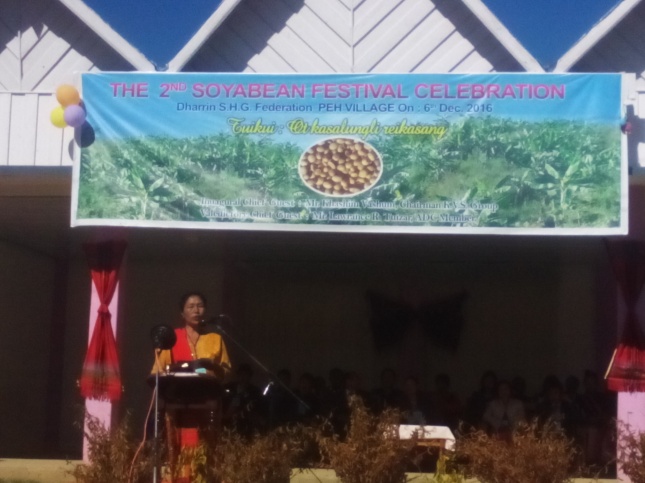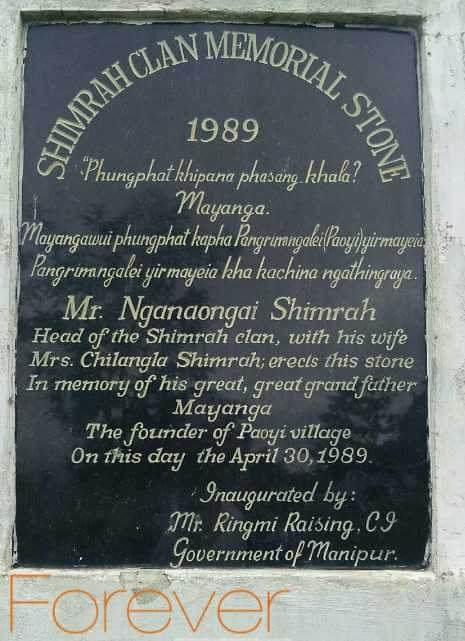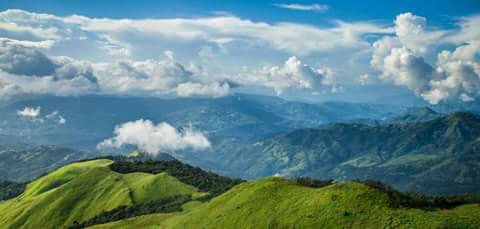Soyabean Festival of Peh Village: The Peh Soybean Festival in Ukhrul District Southern Nagalim, is one of several local festivals which occur each year throughout the state. Beginning the first week of September, the festival celebrates the historical impact of the soybean crop on the economics of Soyabean Farmer and specifically the place of Nagalim. Each year the festival features several locally-oriented events, various programme, and now they are planning to contest the Miss Soybean Festival Pageant in the days to come. Peh is a home of rice and Soyabean in ancient time but it has reduce tremendously. Thereby, the Soyabean Farmers has been trying to revive the crop in the village in the recent years.
Lambat Festival was famous in Nagas society hosted by Peh Village for very long time till 1940; Soyabean was one of the main crop and widely accepted as the most precious food in Naga society. Peh is the of the largest producer of Soyabean in Southern Nagalim.
Short Description about PEH VILLAGE: Peh pronounced “Pe-h” is a village in Ukhrul District, Manipur, India. It is located at 25°17′11″N 94°32′45″E. The village was earlier called ‘Paoyi’, which is a misconstrued derivative of the original name ‘Peh’ given by outsiders. Peh is approximately 35 kilometers north of Ukhrul district headquarter. The village is partially connected by National Highway 150, Imphal–Kohima via Ukhrul–Jessami Highway. The village comprises two settlement areas: Proper Peh and Peh Ngahurum, also known as khunou (New settlement). The total population of the village is around 2700. The village panchayat (Sangvui) consists of the representative from different clans headed by an elected chairman is the Apex body of the village. All administrative, political and judicial decisions are taken by them. The judiciary power is partly held by King(raja)also known as khulakpa.
The size of Peh village is roughly 52 square kilometres. Peh is flanked by Kalhang, Kuirei, Marem, Marangphung, Namrei and Razai in the east, Paorei, Varangrai and Phungcham in the south, Chingjui (Chingjaroi) in the north, Phaibung lower and Ngari in the north-west, Theiva and Hume in the west. Two rich rivers, Wuireikong and Mashakong flow in the eastern and western side of the village respectively, providing abundant source of water to the cultivators and hunters.
Agriculture is the primary occupation of the settlers. Rice is the stable food of the villagers. Soyabean has been abundantly produced in Peh Village since beginning of forefather settle in Peh Village. The village is home to various flora and fauna species. Literacy rate of the village is 76%. Peh village is known for its beautiful landscape. The village is 100% Christian (American Baptist/Protestants), with more than 98% Baptist and the remaining Roman Catholic.
- Any person can buy Soyabean from Peh Village, especially from Shimrah Clan. The nearest of the village are given as under:
- Phungcham Village, Ukhrul 4.8 km
- manipur mmpl 8.7 km
- khamasom villages 12 km
- Tolloi Village, Ukhrul 13 km
- PHAIBUNG 15 km
- Chingjui matha 16 km
- Khouchi Hills 19 km
- The rice Bowl of New Tusom 27 km
- This area belong to Tusom Traditionally name as Pripuiye means Bat spring area now comes In Nagaland state. 30 km
- PAOMATA CIRCLE( POUMAI) 34 km
Shimrah is the clan whose main interest on Soyabean farming: This is their Clan Memorial Stone. They are the first clan founder of the Peh Villag

Poem composed in Peh Dialect:
Oh Peh ramreiram, Amoh Pehram, luisai luinganai mikyanram,
Leiri katum, Oh thingna raha aphop ashon, hikriri ngawur.
Kaphung kaphi mayutmit, kongrei khanina vamda nganungkung,
Oh zimik makatunna ramna, Oh Ameowowui ningmayung ramna.
Lansin luivat shakei, khalem katum khorri khorham zangshunga,
Haori haorangna lei ranganongvai, achikun matina peida ngazekup.
Oh kachanga, Sami Raimi, Kaping Kapango hupda razunyangser,
Oh Pehna khivat kachanglo, Oh Reisang Chonmena sokhame ram.
Raserlo, ithot iyarnaobing, ithum mashit mano usa Peh Ayehram hili,
Thotkha ngachangda, thotkha raphalung, khuira milui haira atamhi.
Oh thuilo, Awo Ayi ngashan riyan phaningungda lungchan usa ithot,
Ithum khanui kharar ningkha yangkha sada mangashong khaningusa.
-Ananimous
Shilloi Kashung in Ukhrul District; Planning to conduct Peh Soyabean programme in SHilloi hill top for all Nagas.